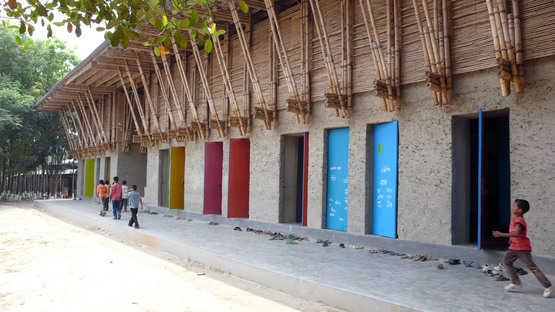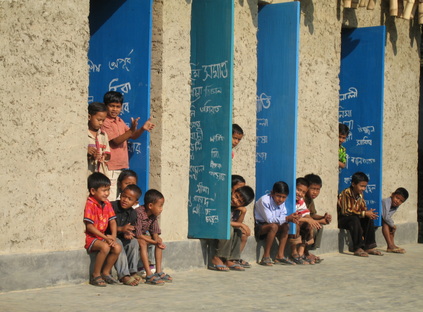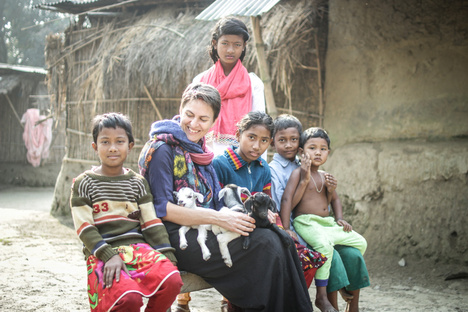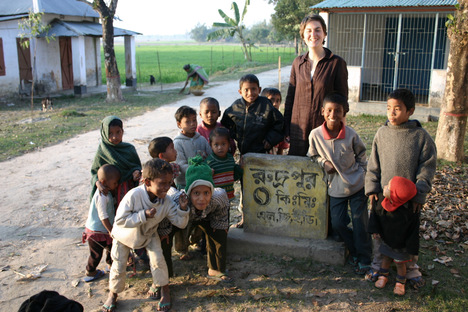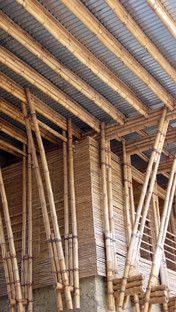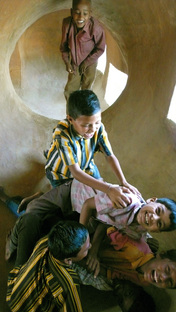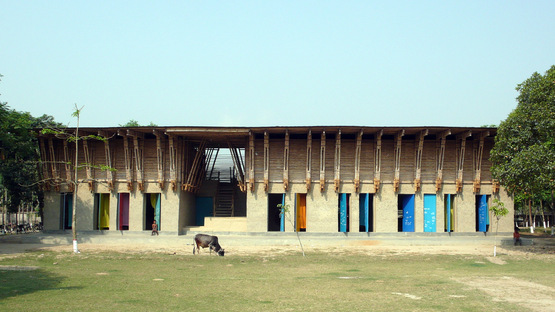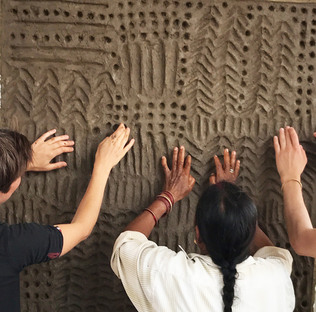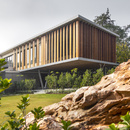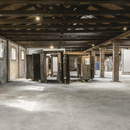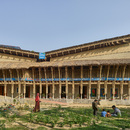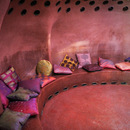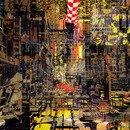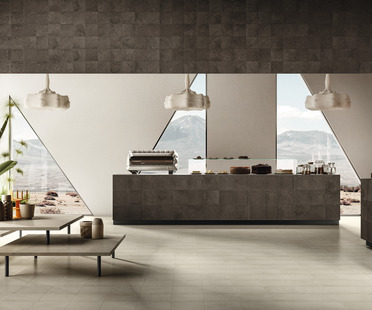02-07-2018
Sustainable and enduring architecture, a conversation with Anna Heringer
- Blog
- Sustainable Architecture
- Sustainable and enduring architecture, a conversation with Anna Heringer
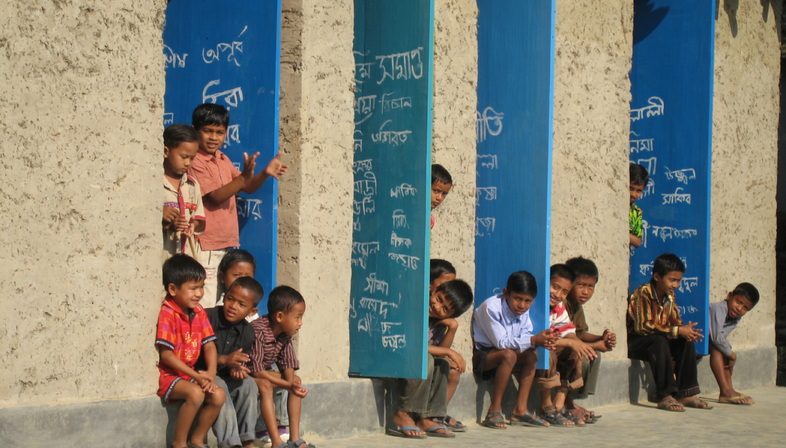 At the 16th International Architecture exhibition - La Biennale di Venezia with the title FREESPACE, to mark her participation in THIS IS NOT A SHIRT, we met Anna Heringer, an award-winning architect whose architecture is the product of a profound respect for the location of her work, the materials used and the people it is for.
At the 16th International Architecture exhibition - La Biennale di Venezia with the title FREESPACE, to mark her participation in THIS IS NOT A SHIRT, we met Anna Heringer, an award-winning architect whose architecture is the product of a profound respect for the location of her work, the materials used and the people it is for.German architect Anna Heringer is participating in the FREESPACE exhibition of the 2018 Architecture Biennale, in the Corderie of the Arsenale with THIS IS NOT A SHIRT, where she explores the world of textile work in Bangladesh (link), Anna puts her heart and soul into her work, which for her is much more than adding a decoration to our environment, rather it is a catalyst for development and for a move towards a fair and sustainable society. Not only for countries like Bangladesh, where so much of her work is located, but also in Africa and Europe.
Anna Heringer arrived in Bangladesh when she was 19 years old. Her intention was to work for a year as a would-be development learner in Africa as a response to her great interest in mud buildings, but she ended up in Asia. At the time - we're talking about the late 1990s - Bangladesh was synonymous with overpopulation, famine and flooding and Anna Heringer immersed herself in the culture of this country during her year's work with the NGO Dipshikha. She learnt the language to understand it better, to love it and to turn it into a part of her world and she still continues to work there now, at Rudrapur in the country's north. This experience instilled her firm belief that continues to inspire all her works more than 20 years later: “Something is efficient and sustainable only when you use local resources and you don't have to depend on the outside”.
This approach explains the success and the long life of her architecture. Because the famous METI School, completed in 2006 and made using materials and labour from Rudrapur in Northern Bangladesh, is still attractive and in use now, 12 years down the track, with only routine maintenance work. Certainly not a foregone conclusion, when you think of the unworthy end to Kunlé Adeyemi's Makoko Floating Schooli (link), that sank in 2016 in Lagos, Nigeria or other works of that kind, where the actual use of the architecture often doesn't live up to expectations. Anna Heringer explains her modus operandi with her respect and her great sense of responsibility towards the users; it's not a question of just creating objects, we need to make a long-term difference in people's lives. This also led to her initiatives to improve life in the rural communities of Bangladesh where she founded in 2012 the textile project Didi Textiles to empower the women in the rural area to earn their living in the countryside without being forced to leave for the cities.
Anna Heringer teaches, she loves being able to train new colleagues and stresses how important it is for young architects to have role models. She has always been interested in architecture made from humble, natural materials like mud, bamboo etc., and her role models were the three female founders of Finnish firm Hollmén Reuter Sandman who have been working on environmentally and socially sustainable projects since 2000, particularly in Africa.
The inspiration for architecture that goes beyond the “impatient capitalism” as Rahul Mehotra said, of lots of square metres at the lowest possible price, and that gives a deeper meaning to her profession. We asked Anna Heringer, as a mother, how she manages to reconcile her great passion for architecture with having a family. No easy task but it is feasible if everyone in the family works as a team to support each other and if you manage the family a bit like a building site, as she answered.
Right now, Anna Heringer is working on two projects in Europe, one in Andalusia, and the other in Austria, both together with the architect Martin Rauch, who is also a specialist in mud buildings. The two projects are structures for sustainable tourism, excellent examples to spread the idea of natural architecture, made using local materials and labour, to a broader audience.
Then, in September, construction will begin on a new building in Rudrapur, Bangladesh, next to the METI school and the DESI building: a centre for people with disabilities that includes a workshop to teach dressmaking skills and for fair trade textile production.
Christiane Bürklein
Studio Anna Heringer - http://www.anna-heringer.com
METI School: Architektur: Heringer, Roswag - Design/Concept: Anna Heringer - Technical Planning Eike Roswag
Images: see captions: Goats – Stefano Mori, the others Studio Heringer - Aga Kahn Trust for Culture/ B.K.S. Inan
You can help Didi Textiles. The crowdfunding project is still going on: https://wemakeit.com/projects/didi-textiles/










